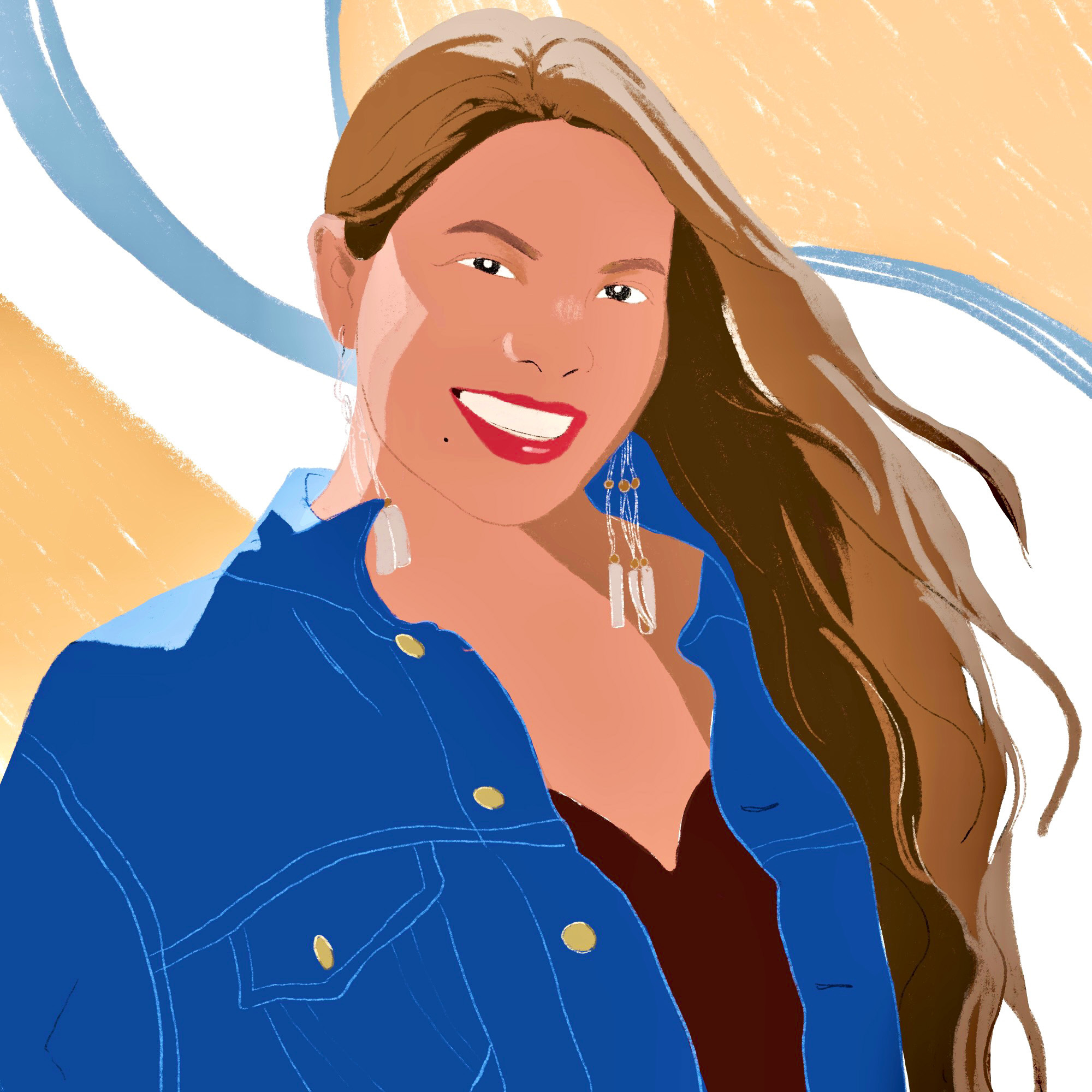
Finding home within: How a Native adoptee rekindled her connection with family and culture
Listen to the Story
Click here for audio transcript
Kara Bobroff: So I remember running around, we were playing and we were in this maze.
I was having a really good time. It was great. And then all of a sudden another one of my classmates called me a racial slur.
And I just remember feeling bad in that moment. but my brother met me, and, um, and I asked him, and I go, what is, what is, um, so I asked him, like, what does an N word mean? And he just was like, what?
So that was like one recognition that I was different,
I was like, I’m not, my skin color is not the same as my family’s.
[Intro in NAVAJO] Yá’át’ééh Kara Bobroff.
My name is Kara Bobroff. I’m Navajo on my mom’s side. Born for Lakota on my father’s side.
I knew I was adopted, but I didn’t know what it meant to be Native American, or Native, or You know, Navajo or Lakota at all.
My mother, she got a phone call asking if she would be, um, wanting to adopt a Navajo baby. I would have ended up in the foster care system. And so she was like, nobody’s gonna put my baby into the foster care system, so it was like an immediate, like, resounding yes.
There are like five of us in my family, um, that I grew up with. There’s three older brothers and sisters, and then there’s, um, my other brother. He is also adopted, and then myself.
I’m the only, native, um, child in the family.
I think I had gone to the Navajo Nation Fair in Window Rock. And I just remember, I was just like, blown away.
One, like, it was so much fun, and two, I was just like, what is this?
Like you’re in the community with, like, all of these different Navajo people. I got curious. I think, right… When I turned 20 I started to like actively try to seek like what would it be like to try to find my biological mother.
And I had actually already wrote a letter to my biological mother, because you can only do that through a social worker. And my… There was no response and I was devastated. I was just like oh man I finally got the courage to write this letter.
Um my brother went to law school out at Stanford and, my brother was always like, you need to meet, um, Hillary.
She reminds me of you. She’s really great. And I was always like, why would I want to meet your friend from law school?
So we had never met, but my brother had shared that she had found her mother and so I emailed her. And, like, the more we, like, exchange, like, details, eventually we figured out there was so much in common.
She was adopted as well, and she grew up on the east coast in New Jersey.
And then this phone call happens.
And I had actually already wrote a letter to my biological mother, because you can only do that through a social worker. And my… There was no response and I was devastated. I was just like oh man I finally got the courage to write this letter.
I explained it to the intermediary, I was like I know you helped me you sent the letter I didn’t get a response. I just wanted to share this with you that I connected with, um, this woman, who my brother knows, and we had this conversation, and she was like, I’m not supposed to do this but I just want you to know that’s your sister. I was like, oh my god, yeah, I was like, what, yeah.
So I think, um, the aspect of like, knowing she was my sister and somebody I found was really, probably the one thing that allowed me to really settle into understanding so much of. Where I had come from, that I would not have otherwise learned. Um, so extremely grateful for that. But it also was, um, I don’t know how to say this, knowing that you had people out there and then knowing that there was no response but then something else positive happened, was really a gift. Um, and we’re Like, best friends today.
As far as, like, my own journey towards identity and, understanding my connection, that was a big piece of it, finding that.
I’ve always have felt fully accepted in, in my own family, in my own community, growing up, and all those things.
But not 100 percent on either side, right? But then I’m thinking, maybe nobody is, right?
So I would say, I hope that people, um, who are feeling like, a sense of doubt or a sense of um, even like a negative feeling about themselves or, are striving to like reconnect and feel that wholeness, um, that they find that, and that they surround themselves with people who are going to be loving and supporting in however that journey takes place for them.
What is the meaning of
home?
Raven E. Marshall speaks with Kara Bobroff about her experience being a Native American woman adopted by a white family. Kara shares her journey to understanding more about her biological family, culture, and ultimately herself.
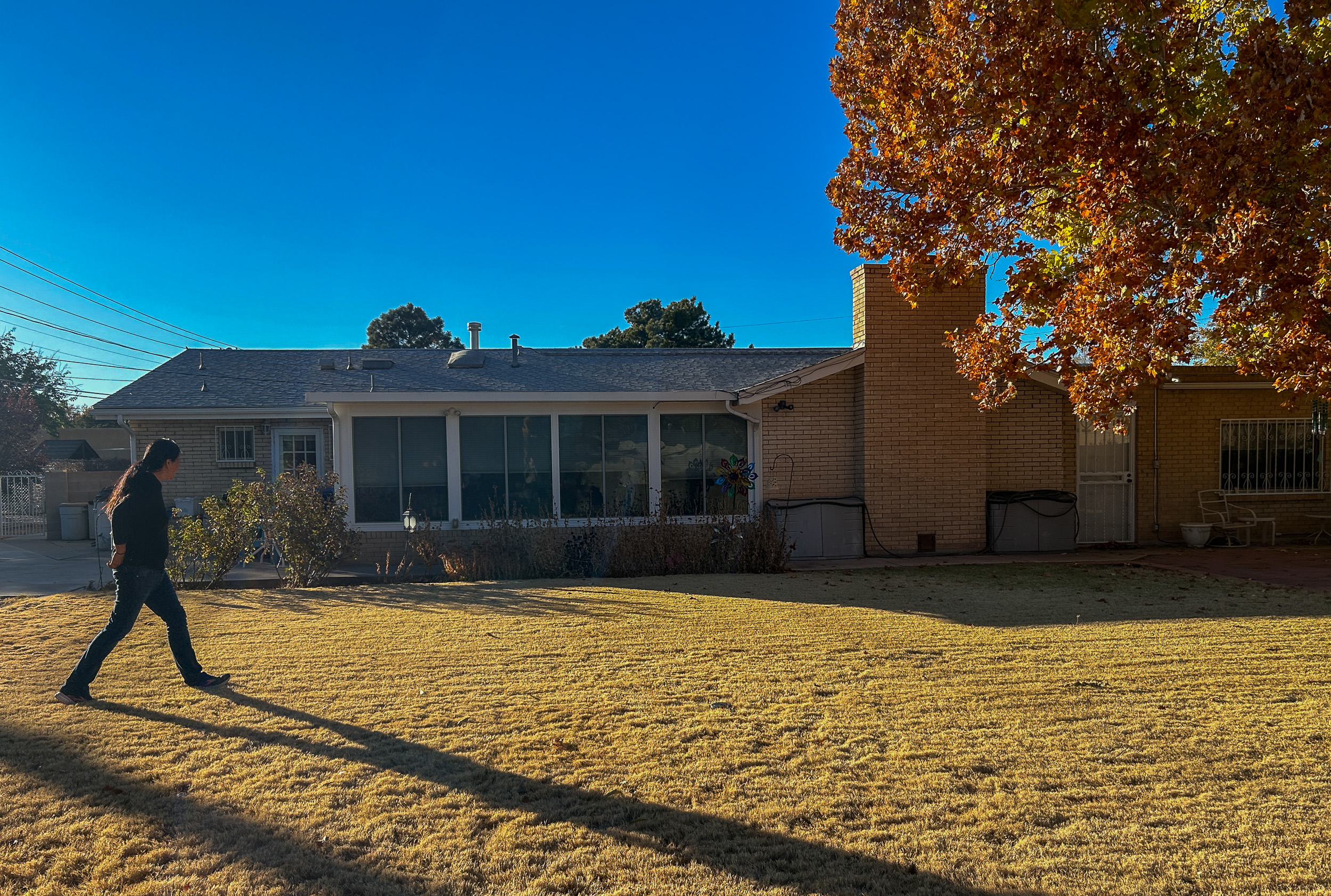
Kara Bobroff reflects on her love for New Mexico as she walks across her grandmother’s backyard toward a maple tree in Albuquerque, New Mexico, on Nov. 13, 2023. “I can physically feel myself needing to, like, connect to the ground, near the river, go for a walk, look at the Sandias,” says Kara.
RAVEN E. MARSHALL / NEXTGENRADIO
“I had gone to the Navajo Nation Fair in Window Rock, and I just remember, I was just blown away!” said Kara Bobroff. “One, it was so much fun, and two, I was just like, what is this? You’re in the community with all of these different Navajo people!”
Bobroff, an educator who serves Indigenous youth in Albuquerque, remembers the first time she attended the Navajo Nation Fair, around age 14 or 15, and recalls the sense of amazement of being surrounded by so many other Navajo [Diné] people.
“I knew I was adopted, but I didn’t know what it meant to be Native American, or Native, or you know, Navajo or Lakota at all,” Bobroff said. She is Navajo of the Salt Clan on her biological mother’s side and Lakota on her biological father’s side.
Bobroff remembers the story her mother told her about the day she got a call asking if she’d be open to adopting a baby. If not, she’d go into the foster care system.
“And so she was like, ‘Nobody’s gonna put my baby into the foster care system.’ So it was like an immediate, resounding yes.”
Bobroff’s family provided a safe and loving environment for her. Even though she was the only Native among her four older siblings, she always felt accepted and loved unconditionally. Her parents were both educators and instilled a sense of social justice in all their children.
I knew I was adopted, but I didn’t know what it meant to be Native American, or Native, or you know, Navajo or Lakota at all.
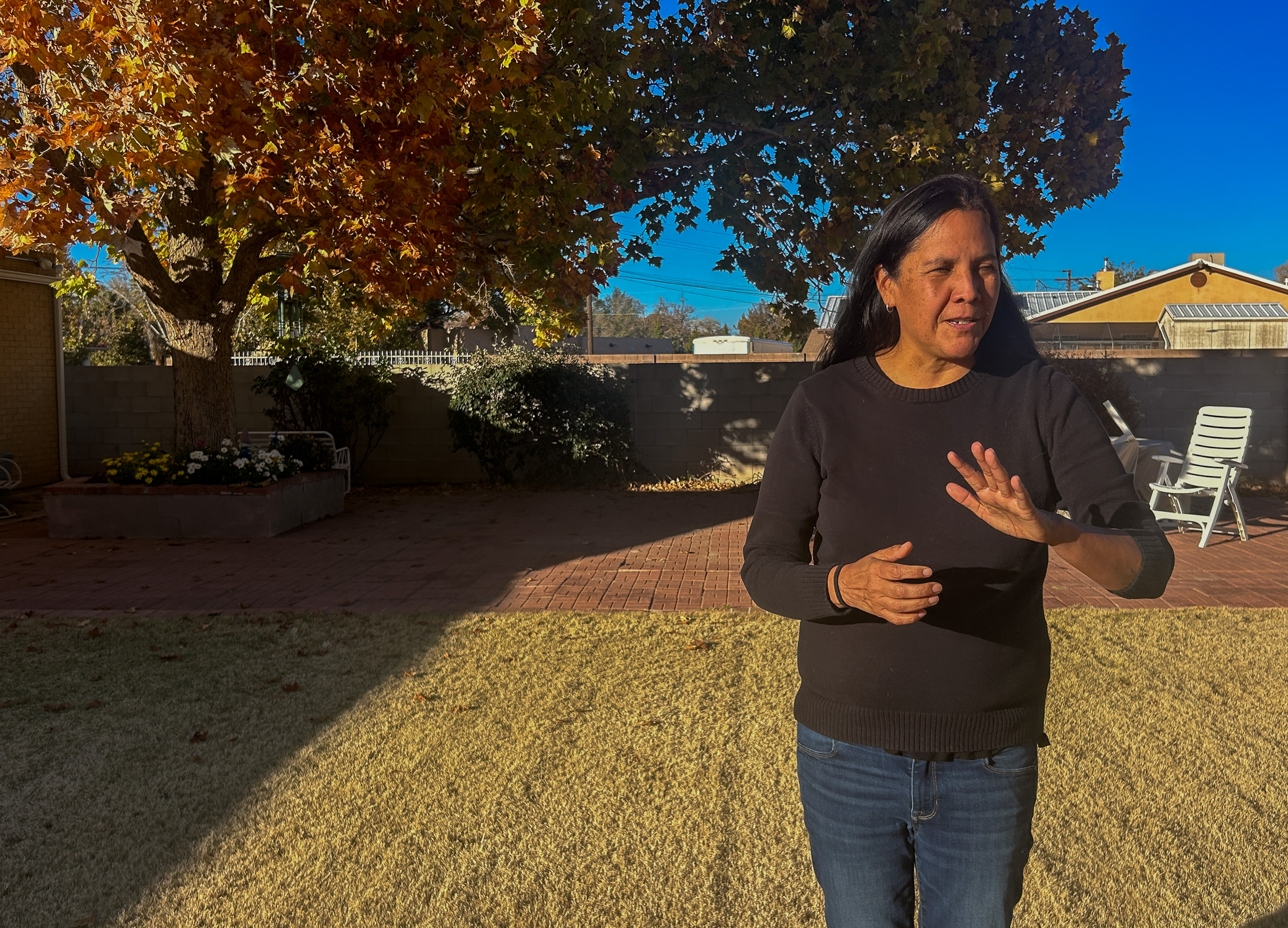
Kara Bobroff explains the importance of her grandmother’s backyard in the North Valley of Albuquerque, New Mexico, on Monday, Nov. 13, 2023. This backyard holds memories and reminds Bobroff of the best parts of her childhood.
RAVEN E. MARSHALL / NEXTGENRADIO
Growing up, Bobroff’s grandmother’s house always felt like a central gathering place for her and her family. Her family gathered to mark joyous moments like birthdays there, as well as holidays and even more somber moments like her adoptive mother’s memorial service eight years ago.
She remembers one particular ring at the Navajo Native Fair that caught her eye. Bobfroff ended up buying it with money that her grandmother gave her. Later, she learned the cultural significance of each stone and mineral. It’s something she wears every day and says she will have for the rest of her life.
But while home was a happy place for Bobroff, school was not. One of her particularly negative memories from elementary school was when a classmate called her a racial slur.
“And I just remember feeling bad in that moment,” she said. “My brother met me, and I asked him, ‘What does an “N-word” mean?’ And he just was like, ‘What!’”
This experience marked a change in how Bobroff saw her identity and altered her relationship with school. She says she didn’t feel comfortable speaking in school for three years after that.
It was memories like this that inspired Bobroff to become an educator as an adult and work in spaces that serve Indigenous youth. In 2006 she helped to establish the Native American Community Academy in Albuquerque, which aims to create a learning environment that is supportive of the Indigenous community it serves.
Bobroff says her curiosity around her biological family began to peak in her 20s. She caught a break, by chance, when her brother, who was going to law school at Stanford at the time, insisted that she meet a friend of his who he felt looked similar to Bobroff.
“I was like, ‘Why would I want to meet your friend from law school?’” she said.
She reluctantly agreed to a call. Once on the phone, the two of them realized they did share a lot in common. There were similarities in their voices, they were both adopted. Little by little they started asking each other questions about what they knew of their biological family. The more questions they asked, the more their answers complemented each other.
“I’m like, ‘Well, I knew my mom was in Denver when I was born’ and she’s like, ‘My mom was in Denver, too!’ She’s like, ‘What else do you know?’”
Bobroff shared this conversation with the social worker who was helping her reach out to her biological mother. That social worker later called back with news that her brother’s friend was, indeed, Bobroff’s sister. That confirmation was a hugely impactful moment in her life. Especially since she recently tried to write a letter to her biological mother but never heard back.
“Knowing that you have people out there, and then knowing that there was no response [to my letter], but then something else positive happened was really a gift,” she said.
Bobroff and her sister have remained close friends and she refers to her as one of her best friends to this day.
It was common practice before the Indian Child Welfare Act (ICWA), a federal law passed in 1978, for Native children to be taken from their families and put into foster care or adopted into non-native families—a method that led to tens of thousands of cases of Indigenous children being severed from their families and cultures. ICWA aims to mitigate those historical traumas by keeping these children with Native families.
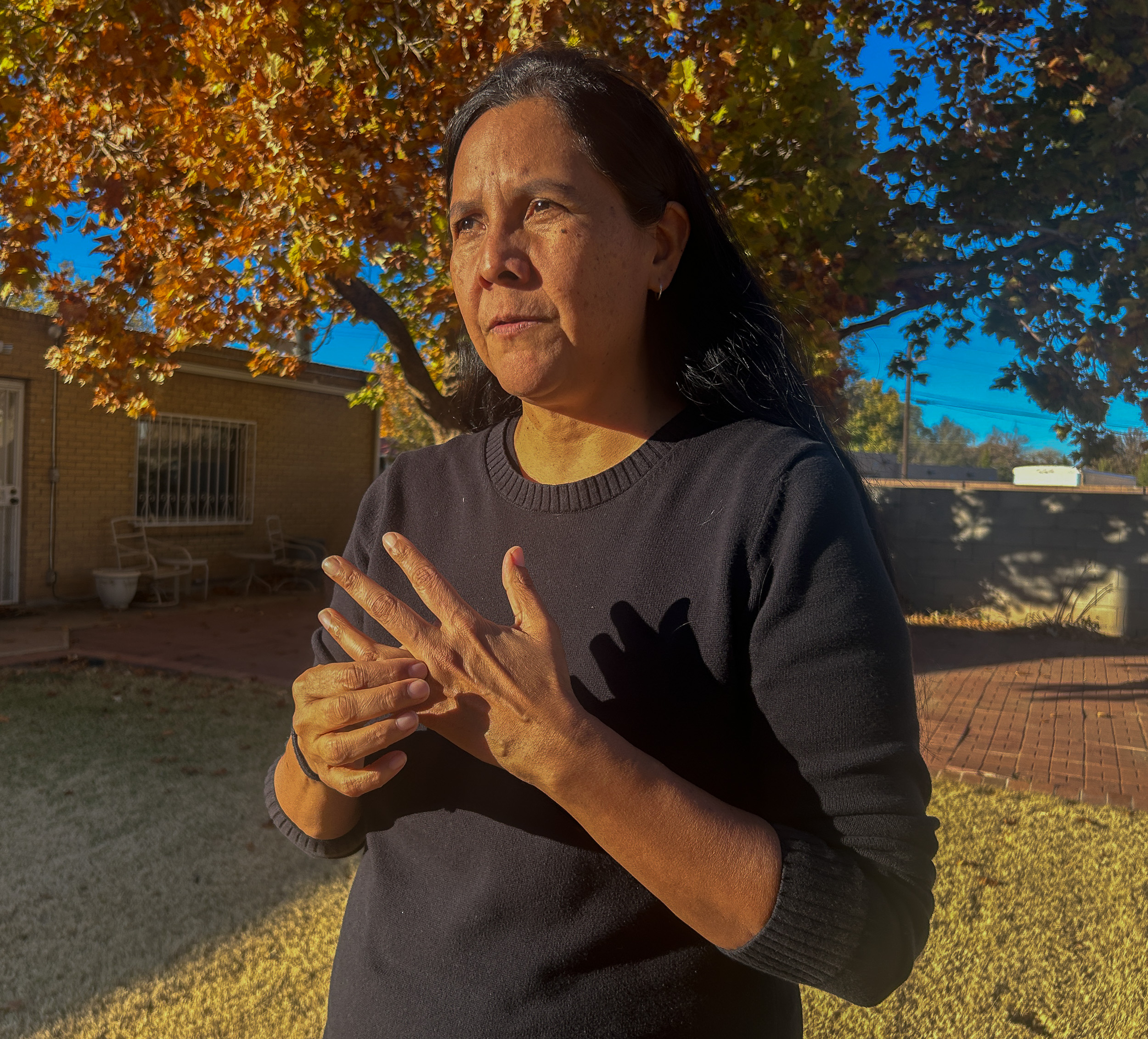
“My grandmother gave me some money and I had, not a ton, but enough to buy this one ring. I’ll keep that for the rest of my life,” says Kara Bobroff from her grandmother’s home in Albuquerque, New Mexico. Bobroff bought the ring as a teenager at the Navajo Nation Fair, her first experience being surrounded by people who looked like her.
RAVEN E. MARSHALL / NEXTGENRADIO

EEJOON CHOI/ NEXTGENRADIO

Kara Bobroff sits in an empty dirt lot behind the grassy backyard where her grandparents once had a lush garden in Albuquerque, New Mexico, on Monday, Nov. 13, 2023. Tending to the garden brings good memories and Bobroff hopes to revive it some day.
RAVEN E. MARSHALL / NEXTGENRADIO
It was common practice before the Indian Child Welfare Act (ICWA), a federal law passed in 1978, for Native children to be taken from their families and put into foster care or adopted into non-native families—a method that led to tens of thousands of cases of Indigenous children being severed from their families and cultures. ICWA aims to mitigate those historical traumas by keeping these children with Native families.
Despite the consequences of being adopted by a non-Native family, Bobroff’s experience with her family has been positive. Simultaneously, she’s happy to draw closer to her Indigenous roots as an adult.
Bobroff says the journey she’s taken from growing up and struggling to fit in at school to finding her sister has been transformative. She’s learned a lot over the years and seems to have found more confidence in her identity as a Navajo woman.
“I don’t speak the language, I didn’t grow up this way. I always have felt fully accepted in my own family, in my own community, growing up, and all those things. But not 100 percent on either side, right?” Bobroff said. “But then I’m thinking, maybe nobody is, right?”
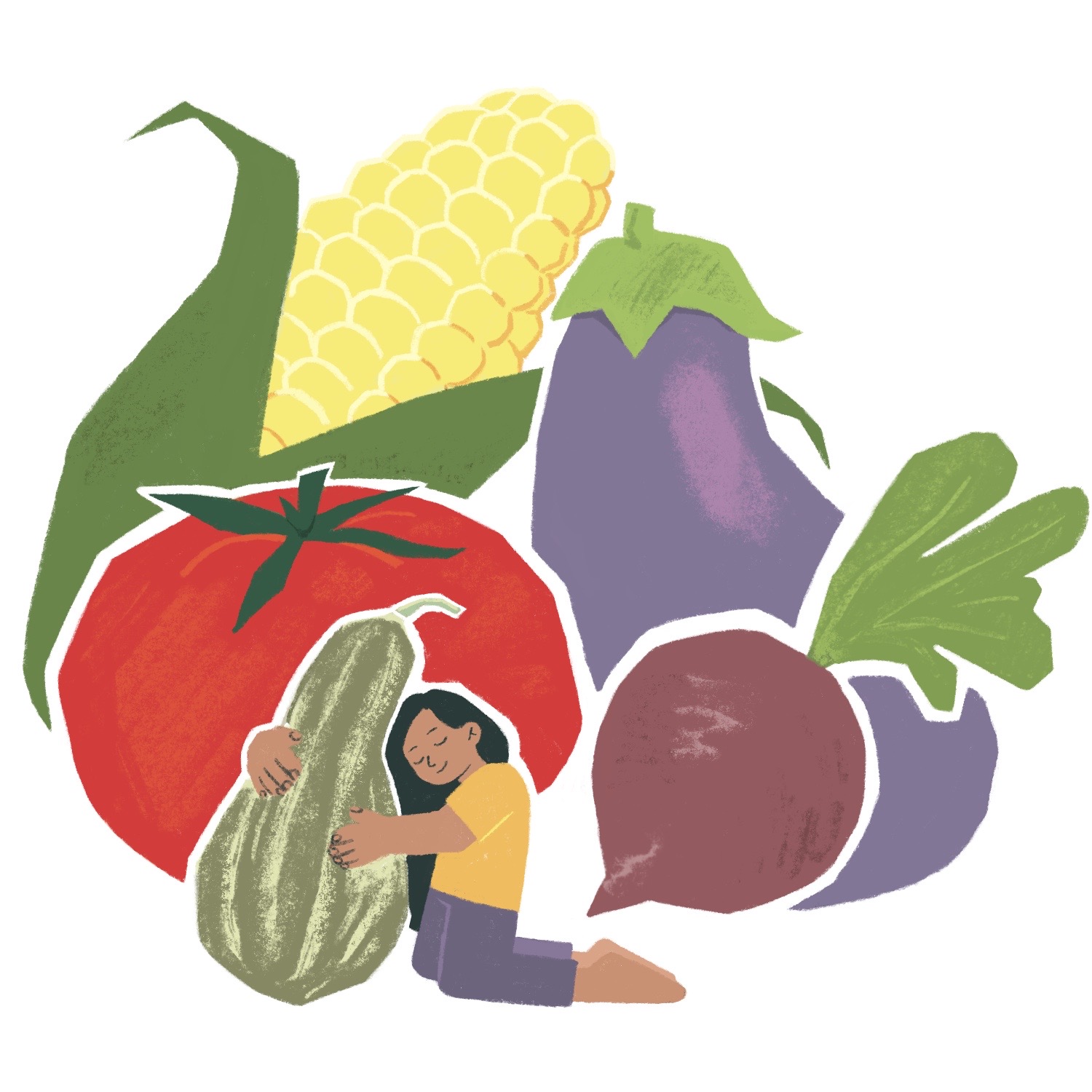
EEJOON CHOI/ NEXTGENRADIO

EEJOON CHOI/ NEXTGENRADIO

Kara Bobroff smells the fragrance of a spring from a cedar tree in her grandmother’s backyard in Albuquerque, New Mexico, on Monday, Nov. 13, 2023. This tree is one of Bobroff’s favorites because she watched it grow as a child. As Bobroff learned about her culture, this tree became even more precious when she discovered that cedar is used as traditional medicine by Navajo people.
RAVEN E. MARSHALL / NEXTGENRADIO
I don’t speak the language, I didn’t grow up this way. I always have felt fully accepted in my own family, in my own community, growing up, and all those things. But not 100 percent on either side, right? But then I’m thinking, maybe nobody is, right?
